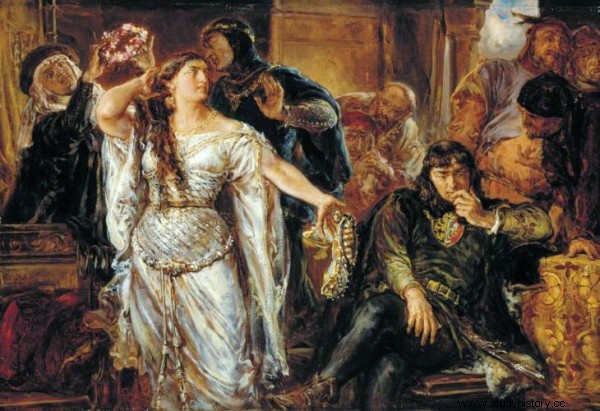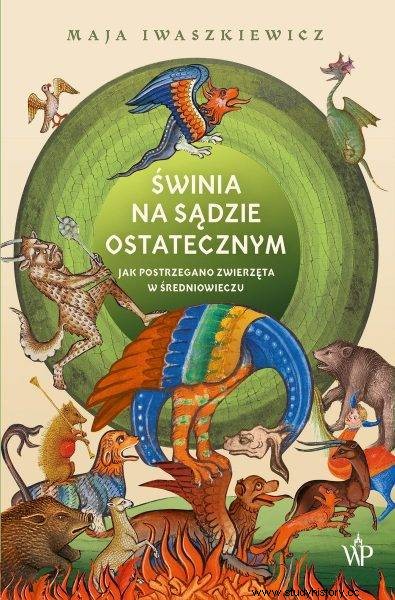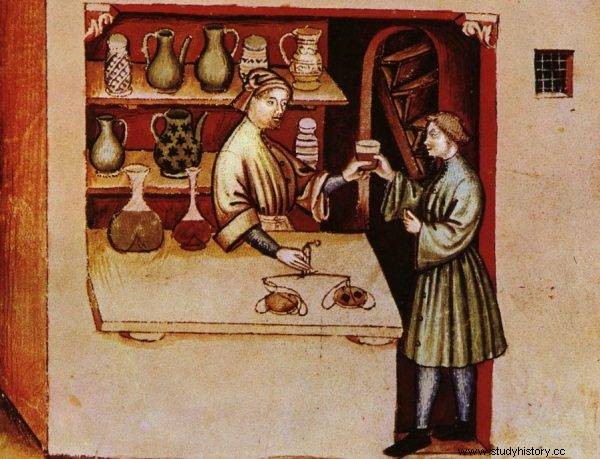When St. Francis of Assisi was urged to consult the Pope's medics in his illness, to say:"The Lord made medicines out of the earth, and a wise man will not despise them." According to this idea, Mikołaj from Poland treated his patients, looking for remedies not in the sky or in the patient's moods, but in God's creation - the more effective, the more disgusting.
Medieval alternative medicine, although it might seem incomprehensible and disgusting to patients, had its staunch supporters even in clergy circles, the most famous of which was the Dominican, Nicholas of Poland.
He ridiculed Galen and his humoral theory, as well as medicaments made of exotic, expensive and hard-to-find ingredients, and considered the medics using them to be charlatans and tricksters. He called for a shift towards natural medicine ( morbum natura sanat media sine curd ), attributing extraordinary, healing properties to the most nasty, disgusting and filthy creatures to walk, crawl and jump on the Earth . For he believed that God had hidden healing properties in his own creation, and the more hideous, dirty, hideous and commonplace that creature was, the more miraculous properties it would have.
The one who taught people to eat snakes, lizards and frogs
In the Traska Yearbook from 1278 we read:"a certain monk named Mikołaj from the preaching order [Dominicans] appeared," who persuaded the Dominican brothers, and then Leszek the Black, to introduce to the daily menu not very encouraging, but in his opinion very healthy dishes, which probably made you sick.

Leszek Czarny and his wife Gryfina, on the recommendation of Mikołaj from Poland, started eating snakes, lizards and frogs.
As the yearly writes, Mikołaj "taught people to eat snakes, lizards and frogs for all diseases," and "Leszek [Czarny], the Duke of Sieradz and his wife Gryfina, on the recommendation of the Dominican, began to eat snakes, lizards and frogs, for which reason
All kinds of serpents, due to the Bible, of course had negative connotations in the Middle Ages. One serpent tempting Eve in paradise ruined the good future of all its own related species.
Dried toad for difficult childbirth
Mikołaj was a man devoted to God and emphasized that it is thanks to God's grace that he can and can heal. "In my treatment I turn to heaven and heavenly stars," he wrote in his most important work, Antipocras , and added:"[...] if you would like to not hear any complaints at all, take into account the forces that, out of God's goodness, lie in things, by means of which miracles happen and many wonders that even the elements succumb to."
Let's take a look at the second work by Mikołaj, entitled Experimenta , in which the doctor gives ready-made "prescriptions" for various ailments. Here's a recipe for reptilian powder:
Take three or four toads, put them in a new pot and cover it with clay so that it cannot steam up; then put it by the fire so far that the toads inside do not burn but only dry up ; and you will know by the sound if you shake the pot, that they are so well dried that they can be pulverized. Then take them out of the pot.

The text was created, among others based on the book by Maja Iwaszkiewicz "Pig on the final judgment", which has just been published by Wydawnictwo Poznańskie.
If they are not yet completely dry, dry them completely in the shade in the wind and then grind them finely in a mortar. Then hide it in a glass, well sealed so that it cannot evaporate. Similarly, make powder from snakes and scorpions.
You could apply it to wounds, which supposedly healed so well that even after severe injuries, there were scars. It was supposed to be effective against "wounds, ulcers, all ailments", as well as aching teeth (the powder, preferably from a snake, had to be placed in the sore spot). He helped with a difficult delivery ("you have to tie this powder to your bare belly, and it will give birth in a moment"), and even "against fistula", if the patient was given something to clean first.
Medieval Supplements
Another remedy by Nicholas was made in a rather macabre way pills made of "green frogs that screech on trees". They were perfect for helping to sweat the disease, treating hardening of the liver and kidneys, "heart spasm and paralysis", and eye diseases. Moreover, if they were taken prophylactically (Mikołaj recommended ten times a year), were supposed to protect against any disease, which makes frog pills perhaps the first medieval supplement on immunity.
Were they widely used? I don't think so. Maja Iwaszkiewicz writes in her book that in the Middle Ages frogs were perceived as attributes of evil, sin and plague, they were supposed to come out of the mouths of sinful women, so they certainly were repugnant. The author, quoting a 13th-century bestiary, writes that deer, which in the Middle Ages were a symbol of purity, faith and Christ himself, cured themselves on a "reptilian diet":
Deer, as soon as they feel the symptoms of the disease, lure snakes out of their holes with the breath from their noses and defeat the harmful poison, feed on them and are cured.

Some medieval medics assumed that the more hideous the creature, the more effective the medicine would be.
Perhaps this custom was also known to Mikołaj from Poland and that is why he recommended preparing food or medicinal powder, as well as a butter-based snake ointment with virtually unlimited usability, which helped with rheumatism or paralysis, and oil, which cured runny nose and hemorrhoids .
Brother Mikołaj emphasized that " it is good for every person in any situation, to eat a snake whenever you can get it ". He recommended the properly prepared meat of snakes to be eaten daily by kings, princes and nobility. Lower states people should also eat snakes if they can catch or buy a proper one.
Snake meat was supposed to protect against leprosy, epilepsy, blindness and deafness. Moreover, as the medic emphasized, "it keeps youth and good complexion better than any medications". Deer, whose practices are described by the author of the book Pig at the Last Judgment , knew about it in the Middle Ages. :"[...] when they eat a snake, they rush to the spring, and when they drink from it, all their gray hair and other signs of aging disappear." Five centuries later, although reptile and amphibian ointments and powders are in vain to find in home medicine chests, cosmetics with the addition of snake venom and spring water are still must have many ladies who care about healthy young skin.
Literature
- Bednarski A., Materials for the history of Polish medicine , "Works of Kom. Hist. Med. and Nauk Przyr.-Mat. " 1939, vol. 1, pp. 25-108.
- Bukowczan-Rzeszut A., Butchers with axes and crusaders high , "The Tudors" 2016, No. 5, pp. 20–25.
- Bukowczan-Rzeszut A., How to survive in medieval Krakow , Krakow 2017.
- Eamon, W., Keil, G., Plebs amat empirica:Nicholas of Poland and His Critique of the Mediaeval Medical Establishment , "Sudhoffs Archiv" 1987, No. 71, pp. 180-196.
- Ganszyniec R., Brother Mikołaj from Poland, medical letters , Poznań 1920, Scientific Works of the University of Poznań, Humanities Section No. 2.
- Iwaszkiewicz, M. Pig at the final judgment , Poznań Publishing House 2021.
- Le Goff, J., Truong, N., History of the body in the Middle Ages , crowd. I. Kania, Warsaw 2018.
- Rostafiński J., Medicine at the Jagiellonian University in the 15th century. Source and critical sketch , Krakow 1900.
- Skulimowscy A. i M., Magister Mikołaj - court physician of the Dukes of Greater Poland in the second half of the 13th and early 14th centuries. , "Archives of the History of Medicine" 1958, No. 2, pp. 285-290.
